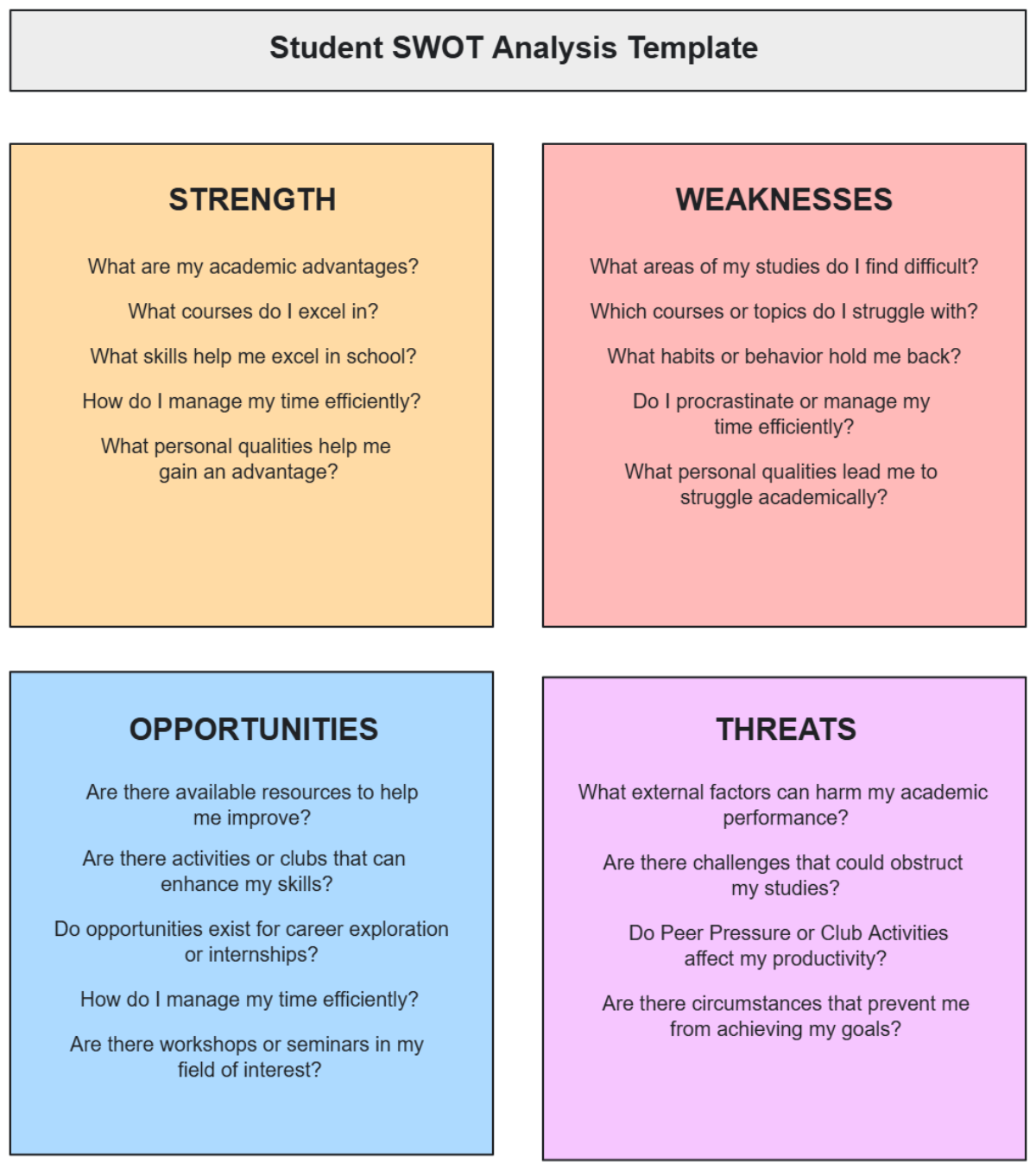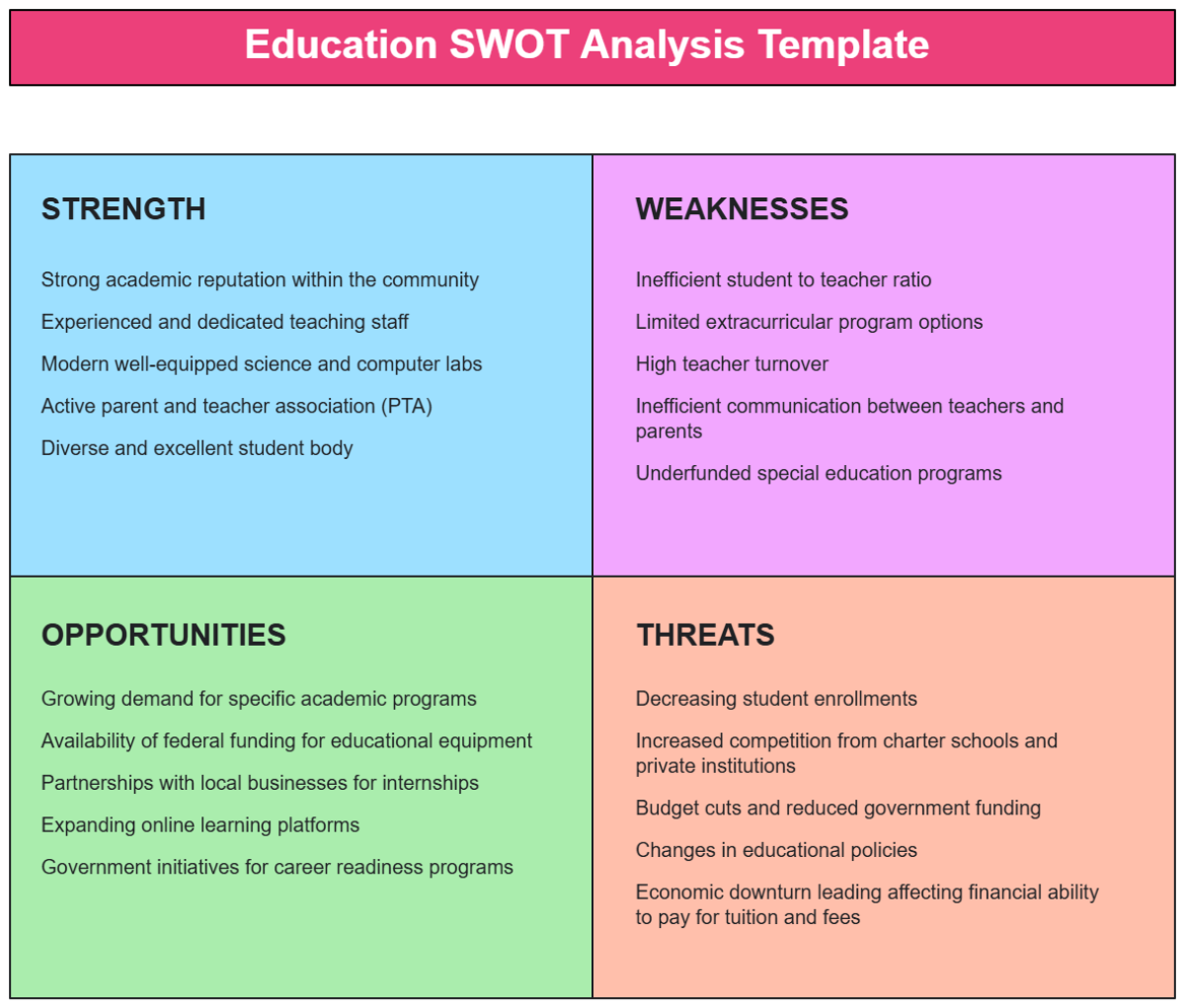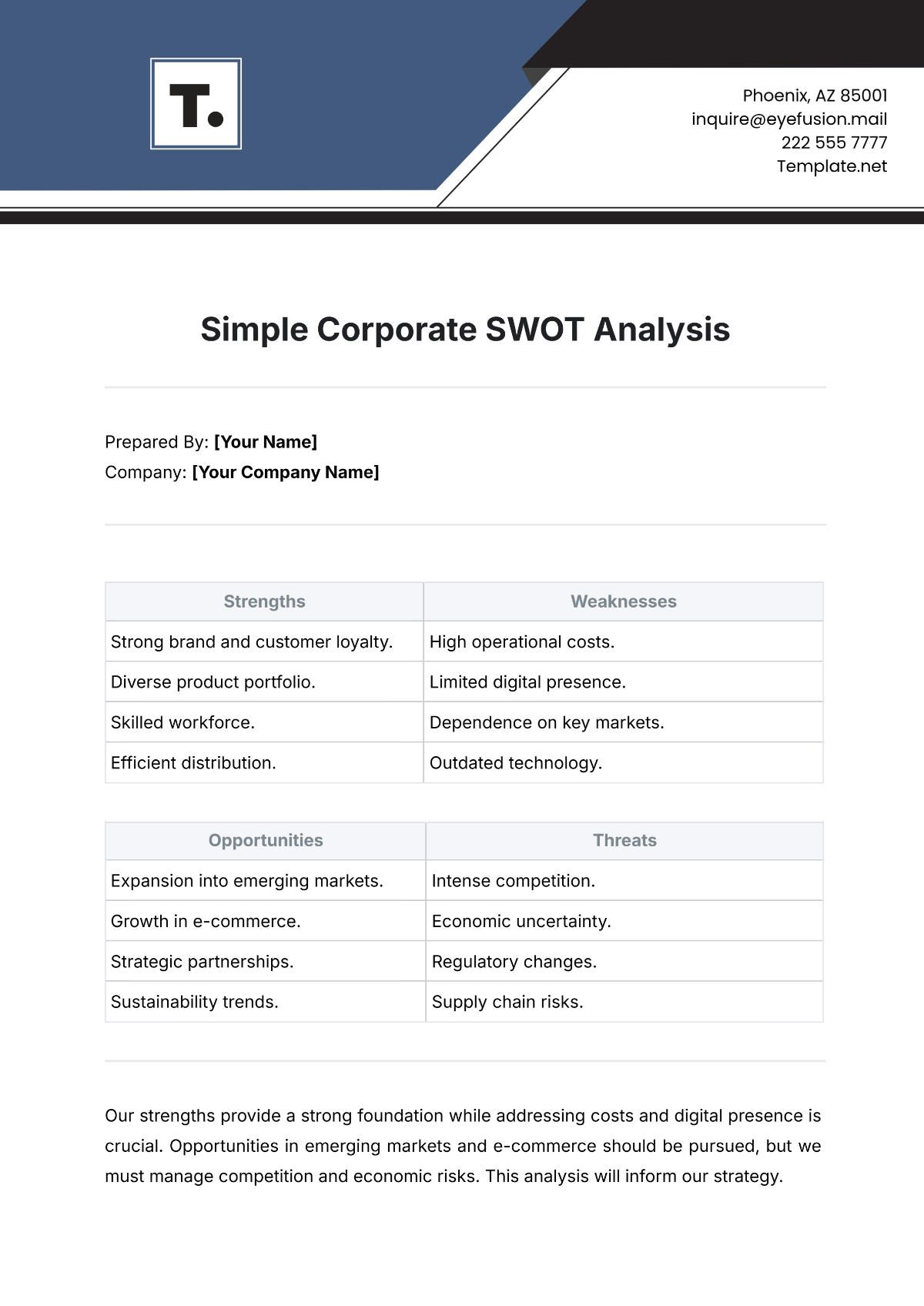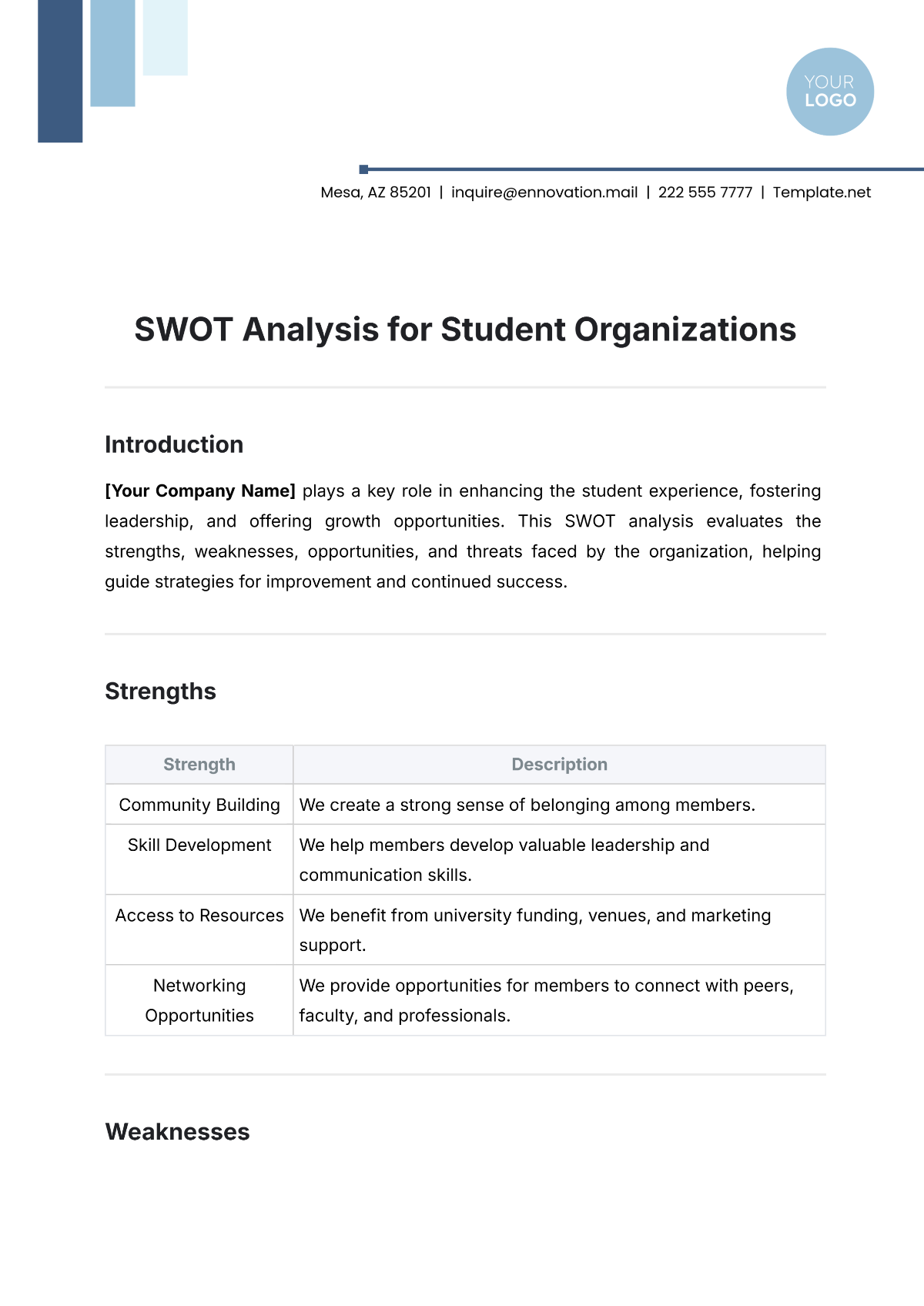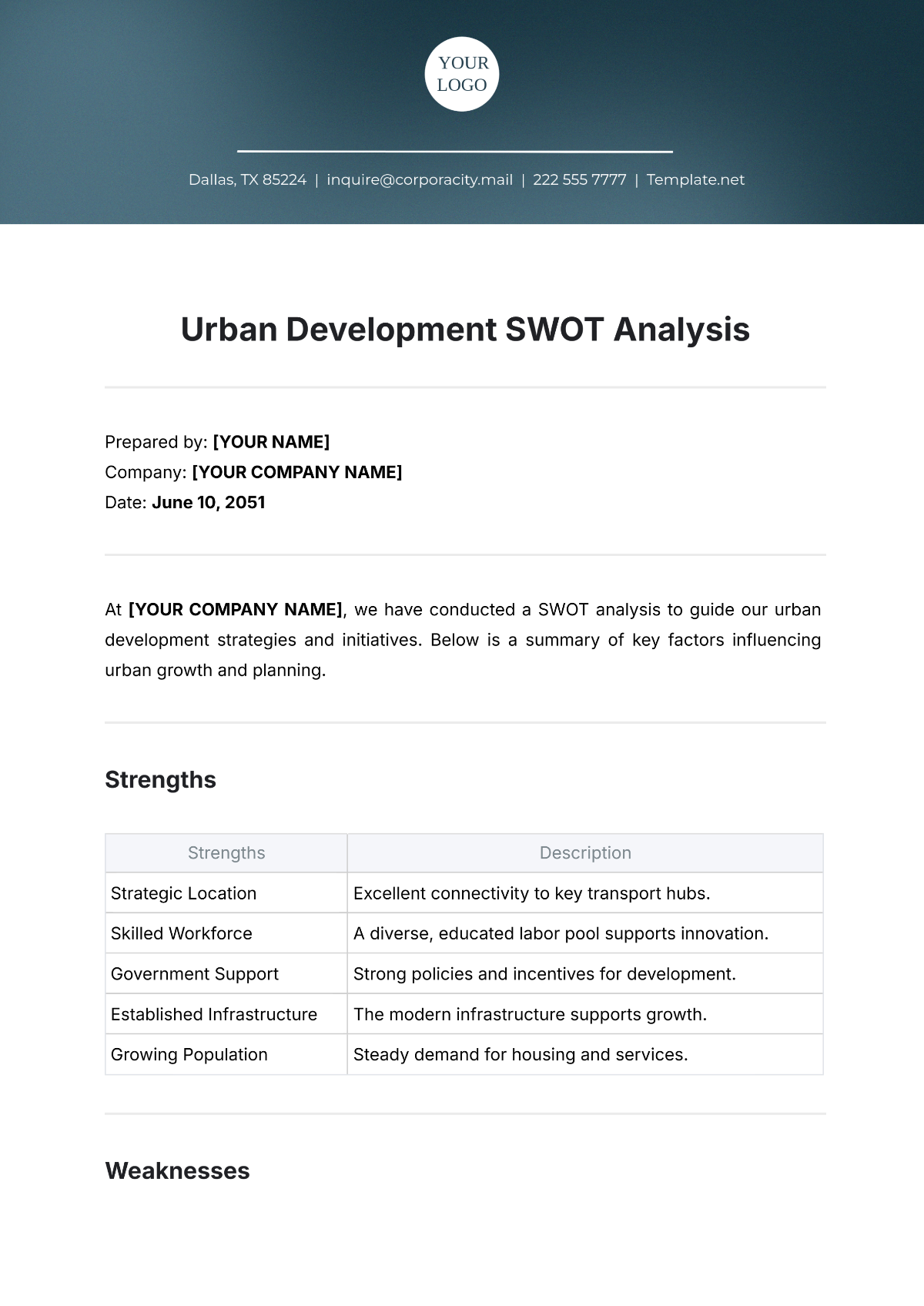Training and Development SWOT Analysis
TABLE OF CONTENTS
INTRODUCTION .............................................................................................................3
COMPANY PROFILE .......................................................................................................3
OBJECTIVES ...................................................................................................................4
SWOT ANALYSIS TABLE ................................................................................................5
MARKET ANALYSIS ........................................................................................................7
CUSTOMER SEGMENTATION .......................................................................................7
TRAINING AND DEVELOPMENT STRATEGIES ............................................................8
SWOT ANALYSIS SUMMARY ........................................................................................9
CONCLUSION ...............................................................................................................10
INTRODUCTION
This Training and Development SWOT Analysis has been prepared to provide a comprehensive assessment of the training and development initiatives for [Your Name] at [Your Company Name]. The analysis covers various aspects, including strengths, weaknesses, opportunities, and threats, to guide strategic decision-making in the realm of training and development.
COMPANY PROFILE
[Your Company Name] is a distinguished and globally recognized organization within the technology sector. With a rich history spanning over 20 years, we have consistently demonstrated our commitment to excellence and innovation.
Our Mission:
At [Your Company Name], our mission is to empower individuals and organizations to achieve their highest potential through world-class training and development solutions. We aim to be the driving force behind professional growth and business success by delivering cutting-edge, tailored training programs.
Core Values:
Excellence: We strive for excellence in everything we do, from designing training modules to delivering unparalleled learning experiences.
Innovation: We embrace innovation and continuously explore new technologies and methodologies to stay at the forefront of the training and development industry.
Customer-Centricity: Our customers are at the heart of our business. We listen to their needs and work tirelessly to exceed their expectations.
Integrity: We uphold the highest standards of integrity, ethics, and transparency in all our interactions, ensuring trust and credibility in our relationships.
Global Presence:
With a worldwide presence, we have successfully delivered our training solutions to a diverse range of clients, spanning various industries. Our commitment to providing localized support while maintaining global standards has been instrumental in our international success.
Expertise:
Our team of dedicated professionals comprises seasoned industry experts, certified trainers, and curriculum designers with extensive experience. We have consistently invested in talent development, ensuring our team remains at the forefront of industry knowledge and pedagogical advancements.
OBJECTIVES
Sustain and Enhance Training Excellence:
Our primary objective is to maintain and enhance our reputation as a provider of top-tier training and development solutions. We will achieve this by continually refining our training methodologies, updating content to reflect industry best practices, and ensuring our trainers remain at the forefront of their respective fields.
Global Expansion:
Expanding our footprint in international markets is a key strategic objective. By 2055, we aim to establish a strong presence in regions we’ve never tapped before, such as the East Asian Market, delivering our training programs to businesses worldwide. This expansion will diversify our client base and revenue streams.
Embrace Digital Transformation:
In response to the evolving landscape of training and development, we commit to embracing digital transformation. By 2055, we will have fully integrated digital learning platforms, virtual reality, and augmented reality into our training solutions, providing learners with immersive and effective learning experiences.
Strategic Partnerships:
To extend our reach and expertise, we will actively seek and cultivate strategic partnerships with industry leaders, educational institutions, and emerging businesses. These collaborations will allow us to tap into new markets, access specialized knowledge, and offer comprehensive training solutions to a wider audience.
Diversity and Inclusion:
We are dedicated to fostering diversity and inclusion within our training programs. By 2055, we aim to have an inclusive curriculum that addresses the diverse needs of our clients and ensures equitable access to our training resources.
Sustainability Initiatives:
We recognize the importance of sustainability in business. By 2055, we will implement sustainable practices in our training programs, including reducing paper usage, minimizing travel-related emissions through virtual training, and promoting environmentally friendly learning materials.
Continuous Improvement:
Continuous improvement is embedded in our culture. We will regularly review and adapt our objectives, strategies, and training offerings to remain agile and responsive to changing market dynamics and customer needs.
SWOT ANALYSIS TABLE
STRENGTHS | WEAKNESSES |
|
|
OPPORTUNITIES | THREATS |
|
|
Interpretation of Table:
Strengths:
Experienced Training Team: [Your Company Name] has a strong advantage with an experienced and highly skilled training team. This expertise allows for the development and delivery of high-quality training programs.
Cutting-Edge Technology: The organization leverages state-of-the-art technology, giving participants access to advanced tools and resources during training, which enhances the overall learning experience.
Proven Track Record: [Your Company Name] has a history of successful training initiatives, consistently meeting or surpassing training and development objectives. This track record builds trust and credibility with clients and partners.
Customizable Training Programs: The flexibility to tailor training programs to meet the specific needs and goals of different businesses is a significant strength. This customization ensures that training remains relevant and effective for diverse clients.
Weaknesses:
Resource Intensive: Developing and delivering high-quality training programs can be resource-intensive, requiring significant investments in terms of time, finances, and personnel.
Limited Global Reach: [Your Company Name]'s training programs primarily target a local or regional audience, limiting its ability to serve businesses with a global presence and tapping into international markets.
Dependency on Key Personnel: The organization heavily relies on a few key individuals within its training team, which poses a risk in case of their unavailability or departure.
Lack of Online Offerings: In today's digital age, the organization has yet to fully embrace the potential of online training and development solutions, potentially missing out on a broader audience and cost-saving opportunities.
Opportunities:
Global Expansion: There is an opportunity for [Your Company Name] to explore and expand its training services globally. This could open up new markets, diversify revenue streams, and cater to businesses with international operations.
Digital Transformation: Embracing digital learning platforms and virtual training can enable [Your Company Name] to reach a wider audience, reduce operational costs, and stay competitive in an increasingly digital world.
Partnerships and Alliances: Collaborating with industry leaders or educational institutions can enhance [Your Company Name]'s credibility and extend its reach, providing access to a broader customer base and expanding its expertise.
Industry-Specific Training: Developing specialized training programs tailored to emerging industries can capture a niche market and address specific industry needs effectively.
Threats:
Competitive Landscape: The training and development industry is highly competitive, with new entrants and established players constantly vying for market share. [Your Company Name] must continue to innovate and differentiate to maintain its position.
Economic Downturns: Economic recessions or downturns can lead businesses to cut back on training budgets, potentially impacting [Your Company Name]'s revenue and demand for services.
Technological Obsolescence: Failure to keep pace with evolving training technologies may render [Your Company Name]'s offerings outdated, potentially losing clients to more technologically advanced competitors.
Regulatory Changes: Changes in regulations or compliance requirements may necessitate frequent updates to [Your Company Name]'s training programs, incurring additional costs and potential disruptions.
MARKET ANALYSIS
Market Trends:
In the ever-evolving landscape of training and development, staying attuned to market trends is essential for [Your Company Name]'s continued success. As we look beyond 2050, several prominent trends are likely to shape the industry:
E-Learning Dominance: E-learning is expected to continue its upward trajectory, driven by advancements in technology and the convenience it offers. This includes the rise of mobile learning, microlearning, and gamified training modules.
Personalized Learning Paths: Learners are increasingly seeking customized training experiences. Artificial intelligence and data analytics will play a pivotal role in tailoring content to individual needs, ensuring higher engagement and knowledge retention.
Virtual Reality (VR) and Augmented Reality (AR): The integration of VR and AR technologies will revolutionize training methodologies. These immersive experiences will be used for hands-on simulations, making complex concepts more accessible.
Diversity, Equity, and Inclusion (DEI): Companies are placing a greater emphasis on DEI training to foster inclusive workplaces. This presents opportunities for specialized DEI training programs and content.
Skills for Emerging Technologies: As emerging technologies like artificial intelligence, blockchain, and biotechnology continue to reshape industries, the demand for training in these areas will surge.
CUSTOMER SEGMENTATION
Identify Target Audiences:
[Your Company Name] recognizes the importance of tailoring training programs to specific customer segments. Beyond 2050, our commitment to personalized learning includes:
Corporate Clients: These include large enterprises seeking comprehensive training solutions for their workforce. We will continue to offer customizable training programs to address their evolving needs.
SMEs (Small and Medium-sized Enterprises): SMEs often require cost-effective training solutions that can be implemented quickly. We will focus on providing scalable training packages that cater to their unique requirements.
Individual Learners: With the rise of freelancers and the gig economy, individual learners are a growing market. We will introduce subscription-based models for access to our training library, offering flexibility and affordability.
Educational Institutions: Collaboration with schools, colleges, and universities will allow us to offer specialized training to students preparing for careers in specific industries.
Needs Assessment:
To deliver effective training, understanding the specific needs and challenges of our customer segments is paramount:
Corporate Clients: Conduct regular assessments to identify skill gaps within organizations. Our training will be tailored to address these gaps, focusing on upskilling and leadership development.
SMEs: Recognize the unique challenges faced by SMEs, such as limited budgets and resources. Our training solutions will be modular, allowing SMEs to select only the modules most relevant to their business.
Individual Learners: Implement continuous feedback mechanisms to gauge the satisfaction and progress of individual learners. This feedback will drive the refinement of our online learning platform.
Educational Institutions: Collaborate closely with educational institutions to align our training programs with their curricula, ensuring students are well-prepared for their future careers.
TRAINING AND DEVELOPMENT STRATEGIE
Short-Term Goals:
Program Diversification: In the short term (within the next 1-2 years), [Your Company Name] will focus on diversifying its training programs to cater to a broader range of industries and skill levels. This includes developing specialized courses for niche markets and offering foundational programs for entry-level participants.
Technology Integration: We will invest in integrating the latest technologies into our training methods. This includes incorporating virtual reality (VR) and augmented reality (AR) for immersive learning experiences, as well as adopting advanced learning management systems (LMS) to enhance course delivery and monitoring.
Local and Global Presence: [Your Company Name] will establish a stronger local presence by conducting on-site training sessions for regional clients. Simultaneously, we will initiate pilot programs for global expansion in select international markets to test the feasibility of a broader worldwide presence.
Certification Programs: In response to the growing demand for recognized certifications, we will collaborate with industry associations to develop certification programs that validate the skills and knowledge acquired through our training.
Long-Term Vision:
Customized Learning Paths: Beyond 2050, [Your Company Name] envisions a future where training is highly personalized. We will leverage artificial intelligence (AI) and machine learning (ML) to create customized learning paths for each participant, adapting content and pacing to individual needs and preferences.
Global Reach: Our long-term vision includes establishing a robust global presence, with a network of training centers and partnerships spanning continents. We aim to serve businesses worldwide, offering localized content and support.
Social Learning Communities: We will create online social learning communities where participants can collaborate, share insights, and learn from each other, fostering a sense of belonging and continuous improvement.
Sustainability and CSR: [Your Company Name] will incorporate sustainability and corporate social responsibility (CSR) themes into our training programs to prepare organizations for a sustainable and responsible future.
SWOT ANALYSIS SUMMAR
After a thorough analysis of [Your Company Name]'s training and development landscape, we have identified the following key insights:
Strengths: [Your Company Name] possesses a wealth of experience within its training team, a strong commitment to utilizing cutting-edge technology, a proven track record of success, and the flexibility to customize training programs to meet diverse business needs. These strengths position us well to continue delivering high-quality training solutions beyond 2050.
Weaknesses: Challenges include the resource-intensive nature of our training programs, limited global reach, dependence on a few key personnel, and the need to fully embrace online training solutions. Addressing these weaknesses is crucial to maintaining competitiveness.
Opportunities: The training landscape is ripe with opportunities, such as expanding globally to access new markets, embracing digital transformation to enhance accessibility, forming strategic partnerships and alliances to broaden our impact, and tapping into niche markets through industry-specific training.
Threats: We must be vigilant about the highly competitive training industry, the potential impact of economic downturns on training budgets, the risk of technological obsolescence, and the need to adapt to changing regulations and compliance requirements.
This SWOT analysis serves as a compass to navigate the evolving training and development terrain, highlighting areas where [Your Company Name] can capitalize on its strengths and opportunities while addressing its weaknesses and mitigating threats.
CONCLUSION
In conclusion, the path forward for [Your Company Name]'s training and development efforts beyond 2050 is illuminated by the insights gained from this comprehensive analysis. We recognize that our strengths provide a solid foundation, but our weaknesses demand strategic attention.
To achieve our objectives of sustaining excellence, expanding globally, embracing digital transformation, and forming strategic partnerships, we must take deliberate actions:
Investment in Technology: We will allocate resources to adopt cutting-edge technologies and develop a robust online training platform to enhance accessibility and engagement.
Diversification of Team: Recognizing the risk of key personnel dependency, we will expand our team's expertise and nurture emerging talent to ensure continuity.
Global Expansion: The company will embark on a carefully planned expansion strategy, targeting key international markets, and tailoring our offerings to meet diverse cultural and business needs.
Strategic Partnerships: Collaborations with industry leaders, educational institutions, and emerging businesses will enrich our portfolio and extend our global reach.
Continuous Monitoring and Adaptation: We commit to ongoing monitoring and evaluation of our programs, adapting swiftly to changes in technology, regulations, and market dynamics.
Risk Mitigation: A robust risk management plan will safeguard our operations against unexpected challenges and uncertainties.
As we move forward, this strategic roadmap will guide our actions and ensure that [Your Company Name] remains a frontrunner in delivering top-tier training and development solutions well into the future, contributing to the success of our clients and partners around the world.













